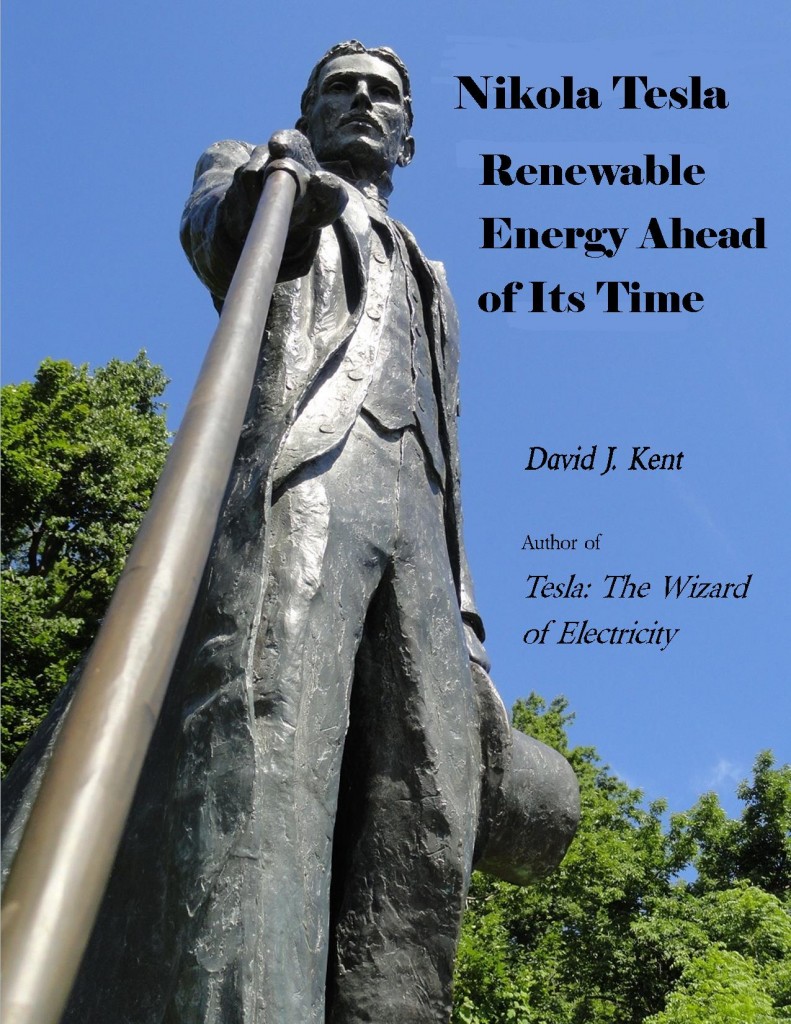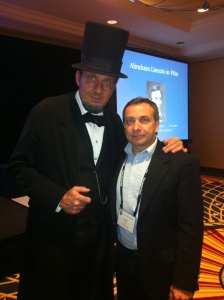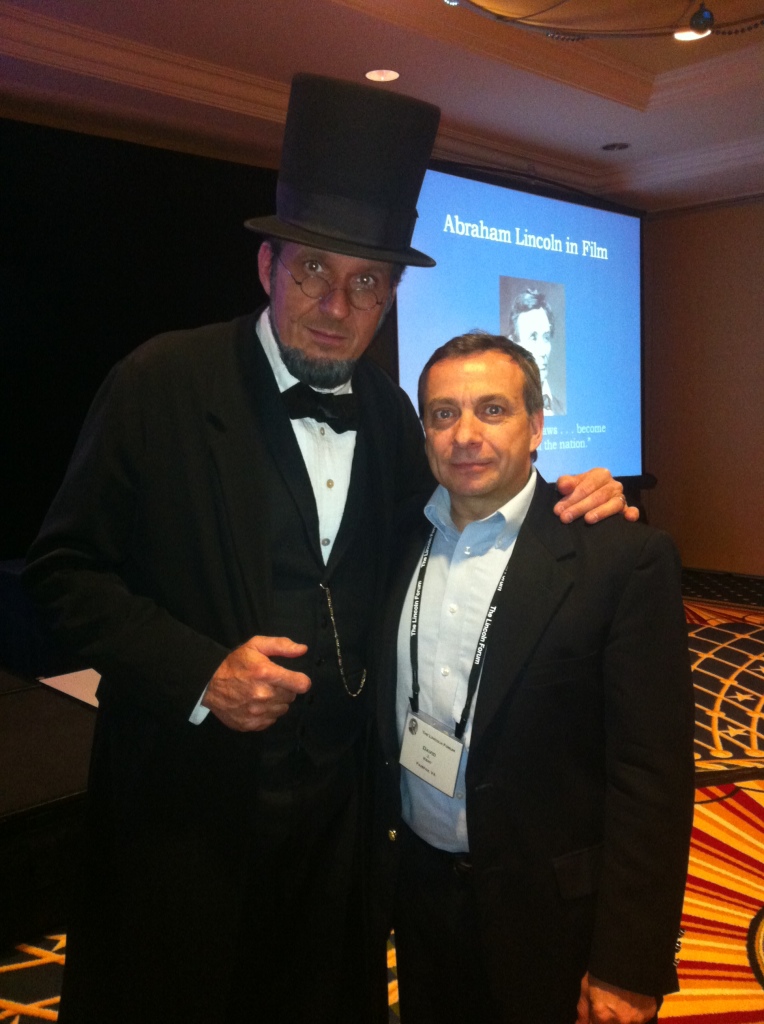A lot can happen in a week, or in this case, two weeks. Here’s a quick rundown of posts covering Nikola Tesla, Abraham Lincoln, Climate Denial, and Thanksgiving.
 Nikola Tesla had a busy week as Amazon put my e-book Nikola Tesla: Renewable Energy Ahead of Its Time onto a “Countdown Deal” clock. The book started at a big discount and then continued at a smaller discount before returning to its normal low price. Thanks to the thousands of people who took a lot. You can read more about it here and still download the e-book on Amazon. Also, check out my Tesla: The Wizard of Electricity book on Amazon, BN.com, and in Barnes and Noble stores.
Nikola Tesla had a busy week as Amazon put my e-book Nikola Tesla: Renewable Energy Ahead of Its Time onto a “Countdown Deal” clock. The book started at a big discount and then continued at a smaller discount before returning to its normal low price. Thanks to the thousands of people who took a lot. You can read more about it here and still download the e-book on Amazon. Also, check out my Tesla: The Wizard of Electricity book on Amazon, BN.com, and in Barnes and Noble stores.
 Not to be outdone, Abraham Lincoln was busy as well. First he was in Washington DC for the Election of 1864 Symposium, then he was in Gettysburg for the annual Lincoln Forum (and something about a speech to dedicate a graveyard), and then he took time away from the Thanksgiving holiday to, well, create the Thanksgiving holiday.
Not to be outdone, Abraham Lincoln was busy as well. First he was in Washington DC for the Election of 1864 Symposium, then he was in Gettysburg for the annual Lincoln Forum (and something about a speech to dedicate a graveyard), and then he took time away from the Thanksgiving holiday to, well, create the Thanksgiving holiday.
 Thanksgiving also featured prominently in Eating Thanksgiving on Hot White Snow. Upon reflection during this time of giving thanks it also struck me that I too often was Blogging the Day Away instead of working on my Lincoln and science book. I’ve corrected that somewhat, which is why there are fewer digressions on Hot White Snow (though admittedly I’m still writing those digressions).
Thanksgiving also featured prominently in Eating Thanksgiving on Hot White Snow. Upon reflection during this time of giving thanks it also struck me that I too often was Blogging the Day Away instead of working on my Lincoln and science book. I’ve corrected that somewhat, which is why there are fewer digressions on Hot White Snow (though admittedly I’m still writing those digressions).
 Finally, as the weather turned colder and the doorstep of winter approaches, The Dake Page took on two topics related to climate denial. The first offered some advice for how to discuss climate change over Thanksgiving (hint, don’t), while the second looked at the phenomenon known as “fake experts.”
Finally, as the weather turned colder and the doorstep of winter approaches, The Dake Page took on two topics related to climate denial. The first offered some advice for how to discuss climate change over Thanksgiving (hint, don’t), while the second looked at the phenomenon known as “fake experts.”
Science Traveling got some attention as well. The plane tickets and rental car are all arranged for an Everglades/Key West/Dry Tortugas adventure in January. More on that soon.
There was also some exciting news this week on the Lincoln book in progress front. Two of the top Lincoln scholars in the world told me that my book topic is a wonderful idea and offered their insights and encouragement. Nothing better than inspirational support from renowned experts, except perhaps a 5- or 6-figure advance from the publisher. In any case, I’m spending the rest of the day on Abraham Lincoln.
David J. Kent has been a scientist for over 30 years, is a lifelong Lincolnophile, and is currently working on a book about Abraham Lincoln’s interest in science and technology. He is also the author of Tesla: The Wizard of Electricity and an ebook Nikola Tesla: Renewable Energy Ahead of Its Time.
Follow me by subscribing by email on the home page. And feel free to “Like” my Facebook author’s page and connect on LinkedIn. Share with your friends using the buttons below.




 But that’s not all. My original book,
But that’s not all. My original book, 
 We can thank none other than Abraham Lincoln for the great turkey-eating, pie-gulping, football-watching holiday of Thanksgiving. Yes, Abraham Lincoln.
We can thank none other than Abraham Lincoln for the great turkey-eating, pie-gulping, football-watching holiday of Thanksgiving. Yes, Abraham Lincoln.





 That’s how I start off my most recent piece on Hot White Snow. It all started with a full-day conference on the Election of 1864 sponsored by the Lincoln Group of DC. The next day I flew to Vancouver for SETAC, and then after only a couple of days back took off for Gettysburg and the annual Lincoln Forum.
That’s how I start off my most recent piece on Hot White Snow. It all started with a full-day conference on the Election of 1864 sponsored by the Lincoln Group of DC. The next day I flew to Vancouver for SETAC, and then after only a couple of days back took off for Gettysburg and the annual Lincoln Forum.  Tired of scientists being too technical in describing climate science?
Tired of scientists being too technical in describing climate science? 

 Elizabeth Varon, Professor of History at the University of Virginia, then provided some insights on the election from the South in her talk “Catastrophe or Setback? The Election of 1864 in Confederate Eyes.”
Elizabeth Varon, Professor of History at the University of Virginia, then provided some insights on the election from the South in her talk “Catastrophe or Setback? The Election of 1864 in Confederate Eyes.” “The Summer of ’64” was a critical time period that significantly impacted the election, said University of Kansas Professor Jennifer Weber, author of Copperheads. Grant’s overland campaign had even die-hard Unionists war weary; Weber explored many reasons how military disasters turned into Union – and Lincoln’s – victories.
“The Summer of ’64” was a critical time period that significantly impacted the election, said University of Kansas Professor Jennifer Weber, author of Copperheads. Grant’s overland campaign had even die-hard Unionists war weary; Weber explored many reasons how military disasters turned into Union – and Lincoln’s – victories. Speaking of the military, the soldier vote was crucial to Lincoln’s electoral victory in November. Christopher Newport University Professor and historian Jonathan W. White examined voting dynamics that possibly changed the outcome of the election in “Emancipation and the Soldier Vote of 1864.”
Speaking of the military, the soldier vote was crucial to Lincoln’s electoral victory in November. Christopher Newport University Professor and historian Jonathan W. White examined voting dynamics that possibly changed the outcome of the election in “Emancipation and the Soldier Vote of 1864.” Following these great talks was our keynote speaker, noted historian Michael Burlingame, author and editor of numerous books on Abraham Lincoln. In a wide-ranging talk, Burlingame brought us into the opposition Lincoln faced in reelection, including many in his own party. His “Radicals, Abolitionists, and Lincoln’s Reelection” explored the fickleness not just of the public, but of the lawmakers and generals who worked for and against Lincoln.
Following these great talks was our keynote speaker, noted historian Michael Burlingame, author and editor of numerous books on Abraham Lincoln. In a wide-ranging talk, Burlingame brought us into the opposition Lincoln faced in reelection, including many in his own party. His “Radicals, Abolitionists, and Lincoln’s Reelection” explored the fickleness not just of the public, but of the lawmakers and generals who worked for and against Lincoln.






 What do Picasso’s “Guernica,” David’s “The Death of Marat,” and Wyeth’s “Christina’s World” have in common? They all were posters hanging on my bedroom wall as a teenager. Yes, I was not a normal child. Read more at “
What do Picasso’s “Guernica,” David’s “The Death of Marat,” and Wyeth’s “Christina’s World” have in common? They all were posters hanging on my bedroom wall as a teenager. Yes, I was not a normal child. Read more at “ Two big events in climate science occurred this week. The most important one (IPCC’s Synthesis Report) was largely ignored while the least important one (Mid-Term Elections) will be talked about for the next two years. Check out why on
Two big events in climate science occurred this week. The most important one (IPCC’s Synthesis Report) was largely ignored while the least important one (Mid-Term Elections) will be talked about for the next two years. Check out why on  Speaking of elections,
Speaking of elections,  Meanwhile, this week also saw the anniversary of Lincoln’s tempestuous marriage to Mary Todd. The sudden wedding caught everyone by surprise; could have been because Mary had seduced old Abe? And why did Mary refuse to be photographed with her husband?
Meanwhile, this week also saw the anniversary of Lincoln’s tempestuous marriage to Mary Todd. The sudden wedding caught everyone by surprise; could have been because Mary had seduced old Abe? And why did Mary refuse to be photographed with her husband? 






